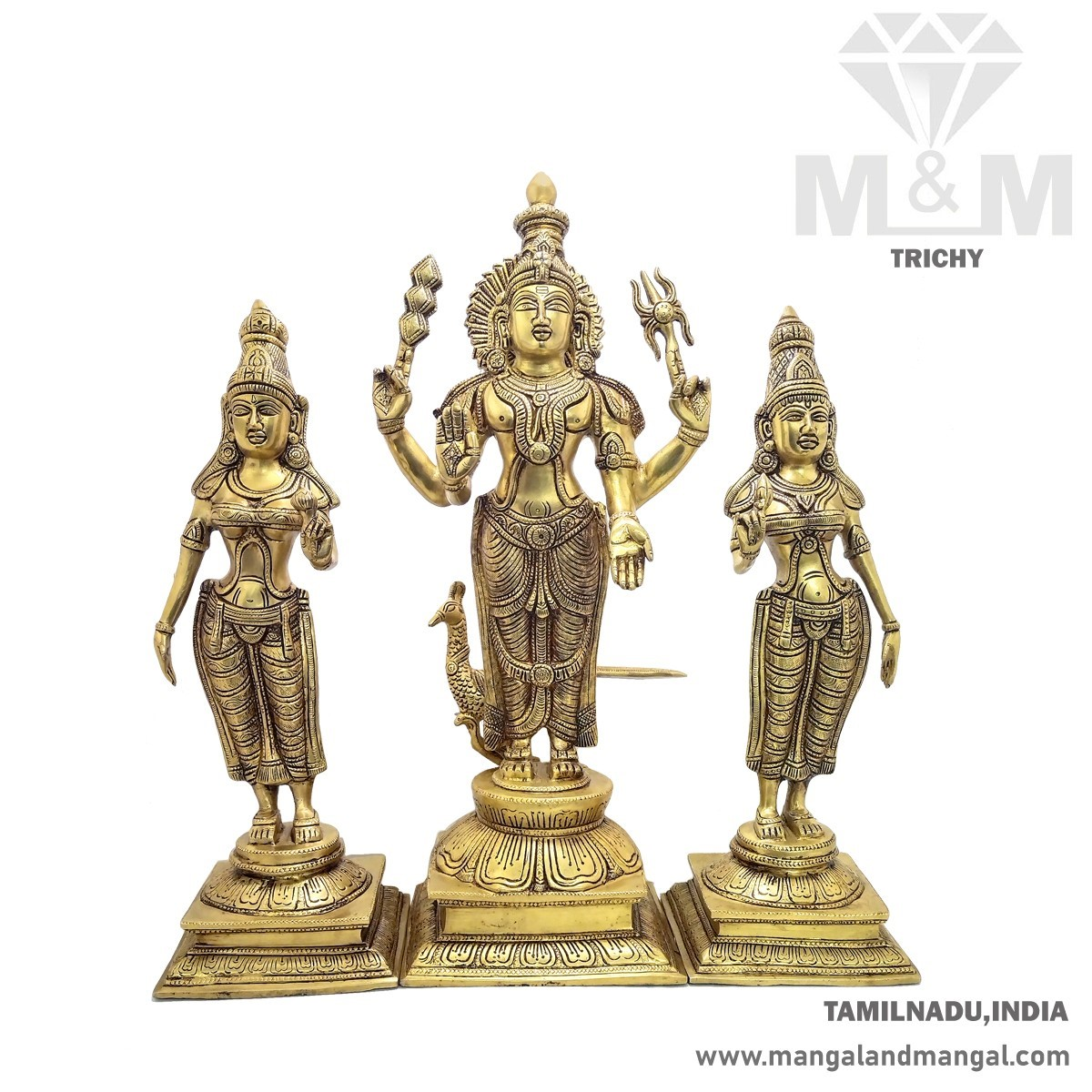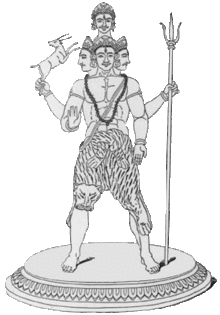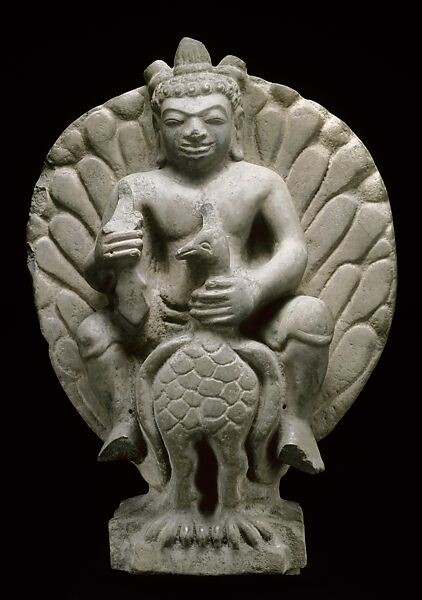[ஒரு அலசல்- தமிழிலும் ஆங்கிலத்திலும்]
வேதத்தில் சிவ வழிபாடு இல்லை. ருத்ரன் இருக்கிறார். வேதங்களில் இறுதியாக வந்த உபநிடத காலத்தில் தான் வேதம் சிவனை தனக்குள் உள்வாங்கியது. எனினும் உருவ வழிபாடு உபநிடத காலத்திற்கு பின்பு தான் அங்கு வந்தது. அதாவது, ருத்ரனும் சிவனும் பிற் காலத்தில் ஒன்றாக்கப் பட்டார்களே அன்றி வேதம் கூறும் ருத்ரனுக்கு, இன்றைய சிவனுக்குரிய அம்சங்கள் இல்லை. வேதத்தில் கூறப்படும் ருத்திரனின் பண்புகளில் சில சிவனுடைய பண்புகளுடன் ஒத்திருந்தாலும், ஒவ்வாதவையும் பல உள்ளன.
உதாரணமாக, ரிக் வேதத்தில் பல இடங்களில் நலம் தரும் மருந்துகளுடன் வந்து நோய் நீக்குபவராக ருத்திரன் கூறப்படுகிறார் [1.43.4:-- "To Rudra Lord of sacrifice, of hymns and balmy medicines, We pray for joy and health and strength"]. இது சிவனை வைத்தியநாதன் என்று இன்று நாம் வழங்குவதுடன் ஒத்திருக்கிறது. வேத தெய்வமான ருத்திரனின் மாற்றுருவமே சிவன் என்று சொல்வதை விட, சிவன் என்னும் கருத்து உருவாகிய பின், அவருடைய வழி பாட்டுக்கு, ருத்ரனைக் குறித்த வேத மந்திரங்கள் பயன்படுத்தப்பட்டன என்று கூறுவதே பொருத்தம் ஆகும். எது எப்படியாயினும், லிங்க வழிபாட்டிற்கு எதிரான அவர்களின் எதிர்ப்பை உடனடியாக மறைக்க முடியாது. ஆகவே பல்வேறு கோட்பாடுகளை "நாத விந்து கலாதி" க்கு கொடுத்து அதை நியாயப் படுத்தினார்கள். அவர்களுக்கு இதை விட வேறு வழி தெரிய வில்லை! பழங்குடி சார்ந்த திராவிட தெய்வங்கள் பிராமண தெய்வங்களுடன் ஒன்று படுத்தப் பட்டன. அப்படி ஒன்று படுத்தப்பட முடியாத தெய்வங்களுக்கு புதிய பிராமண வேத நூல்கள் இயற்றப்பட்டு மதிப் பளிக்கப் பட்டன. சிவ வழி பட்டை ஆதரிக்கும் ஆரியர் குழு, ஐயர் என்ற சிறப்பு பெயர் பெற்று, ஆலயத்தில் தமிழை நீக்கி, தேவ மொழியாக, சமஸ்கிருதத்தை அறிமுகப் படுத்தினார்கள். தாங்கள் கடவுளுக்கு ஓதும் மந்திரத்தை நீங்கள் அறியத் தேவையில்லை என்றார்கள். திராவிடர்கள் அவர்கள் கூறியதை அப்படியே நம்பினார்கள். காலப் போக்கில், அது ஒரு பாரம்பரியமாக மாறி, ஆலய பூசையில், தமிழ் தன்னிடத்தை முற்றாக இழந்தது.
மத்திய ஆசியாவில் இருந்து நாடோடியாக வந்த ஆரியர்கள், திராவிடர்களை வென்ற பின்பு, பண்டைய திராவிடர்களின் சமயத்திலும் மாற்றம் மெல்ல மெல்ல எற்பட்டது. பண்டைய கால தமிழர்கள் போர் மற்றும் காதலில் சிறந்து விளங்கிய, “இளமை’ கடவுளை வணங்கினர். அக் கடவுளுக்கு இளமை, இளைஞன் எனும் பொருள்பட முருகு அல்லது முருகன் என்ற
திராவிட பெயர்கள் வழங்கப்பட்டன [முருகு விம்மிய மொய் குழலேழை (சீவ.)]. அக்கடவுள், வடஇந்தியர்கள் வணங்கிய போர் கடவுளான “ஸ்கந்தா’ வோடு ஒத்து காணப் படுகிறது.
அது போலவே வேதங்களில் 'உருத்திரன்; என்று ஒருவரைப் பற்றிப் பேசப் படுகின்றது! இவரைச் சிவனுடன் சேர்த்து விட்டார்கள். உதாரணமாக, தமிழரின் சிறப்புக் கடவுள்கள், ஆரியக் கலப்புக்குப் பின்னர்:
முருகன்→ ஸ்கந்தன் / சுப்பிரம ணியன் ஆனான்!
திருமால்→ விஷ்ணு ஆனான்!
சிவன்→ ருத்திரன் ஆனான்!
கொற் றவை→பார்வதி / துர்க்கை ஆனாள்!
உதாரணமாக சுத்த தமிழ்க் கடவுளான முருகனை, பிராமணர்கள் கந்தனாக்கி விட்டார்கள். சுப்ரமண்யனாக்கி விட்டார்கள். ஏன் ... பரமசிவன் - பார்வதியின் மகனாக்கி விட்டார்கள். தமிழர்களின் சைவ மதம் வைதீக பிராமண மதத்துக்குள் உள்வாங்கப் பட்டது. அடிமைப் படுத்தப் பட்ட மக்களை, வென்றவர்களின் கலாச்சாரத்திற்குள் உள்வாங்கிய வரலாறு தான், பிற்கால இந்து மதத்தின் வரலாறு ஆகும். தென்னிந்தியர்களின் நாட்டார் தெய்வங்களை எல்லாம், இந்து மதத்திற்குள் உள்வாங்கினார்கள். அவற்றிற்கு, சமஸ்கிருதப் பெயர்கள் சூட்டப் பட்டன. தமிழரின் நாட்டார் தெய்வமான முருகன், சுப்பிரம ணியன் என்று பெயர் மாற்றி இந்து மதக் கடவுளர்களில் ஒருவரானார். அதனால் தான், தமிழரை விட அதிகமாக ஆரிய மயப் பட்ட, மலையாளிகளும், கன்னடர்களும், "சுப்பிரமணியக் கடவுள்" என்றே அழைக்கின்றனர். முருனும் ,சுப்ரமணியனும் வேறு வேறு என்பதை, தமிழ் இந்துக்களும் உணர்வதில்லை. தொடக்கத்தில் வைதீக பிராமண மதம் யாகத்தில் உயிர்க்கொலை செய்யும் வழக்கத்தைக் கொண்டிருந்த படியாலும், நால்வகைச் சாதிப்பாகு பாடுடையதாய்ப் பிராமணர் மட்டும் உயர்ந்தவர் என்னும் கொள்கையுடையதாயிருந்த படியாலும், இவற்றிற்கு மேலாக, பிராமணர் தவிர மற்றவர்கள் வேதத்தைப் படிக்கக்கூடாது என்று தடுத்து வந்த படியாலும், இவ்விதக் குறுகிய கோட்பாட்டினையுடைய வைதீக மதத்தில் மக்களுக்கு மனம் செல்லவில்லை. என்றாலும் கி. பி. நாலாவது, அல்லது ஐந்தாவது நூற்றாண்டுக்குப் பின்னர், வைதீக மதம் தனது அடிப்படையான கொள்கைகள் சிலவற்றில் மாறுதல் செய்து கொண்டு புத்துயிர் பெற்றது. அதாவது, யாகங்களில் உயிர்க் கொலை செய்வதை நிறுத்திக் கொண்டதோடு, திராவிட தெய்வங்களைத் தன் மதக் கடவுளராக ஏற்றுக் கொண்டு புதிய உருவம் பெற்று விட்டது. உலக வரலாறு நெடுகிலும், ஆக்கிரமிப்பாளர்கள் கடைப்பிடிக்கும் தந்திரம் இது. உறவு முறைகளை வலிமைப் படுத்த ஏராளமான புராணங்கள் உருவாக்கப் பட்டன. தமிழில் உள்ள, முருகன், வள்ளிக் கதையானது, குறவர்கள் போன்ற பழங்குடி இனத்தவருக்கு உரியதாகத் தெரிகின்றது . இன்றைக்கும், பிராமணர்களின் வர்ண சாஸ்திரத்தால் தாழ்த்தப்பட்ட சாதியினர் அல்லது கிராமபுர மக்கள் மத்தியில் "முருகன்", "வள்ளி" போன்ற பெயர்கள் பிரபலமாக உள்ளன. உயர் சாதியினர் அல்லது சம்ஸ்கிருத மோகம் கொண்ட மக்கள் மத்தியில், அதற்கு மாறாக, "ஸ்கந்தன்", "சுப்பிரமணியன்" என்று சமஸ்கிருதப் பெயர்களை வைத்துக் கொள்கின்றனர்.
தமிழர் சமயக் கிரியைகளோடு வைதீக வேள்விக் கிரியைகள் கலந்தன. ஆரிய பிராமணர்களின் தொழில் வளம் கருதி உருவாக்கப் பட்ட கிரியைகள் அறிவுக்கு ஒவ்வா நம்பிக்கைகளை உருவாக்கின. திராவிட தெய்வங்கள் வைதீகத்தில் கலந்து உருமாறின. முருகனுக்கு தமிழில் வள்ளி என்ற மனைவி இருந்தார். ஆரியத்தோடு சேர்ந்து இந்திரனின் மகளான தெய்வானையும் மனைவியாகச் சேர்ந்து கொண்டார். இதன் மூலமே, தேவேந்திரனுடன் சொந்தமாகின்றார்! இதில் முதலாவது களவொழுக்கத்தையும் இரண்டாவது கற்பொழுக்கத்தையும் காட்டுகிறது. மணச் சடங்கினைப் பற்றி தொல்காப்பியம் கூறும் செய்திகளில் பண்டைத் தமிழர்கள் திருமணம் என்ற சடங்கு இல்லாமலேயே இல்வாழ்க்கையில் ஈடுபட்டிருந்தனர் என்பதை அறிகிறோம். எனினும் காலப்போக்கில், பெற்றோர் நடத்தி வைக்கும் 'கற்பு நெறி' மணவாழ்க்கை அறிமுகப் படுத்தப் பட்டது. இதன் பின்னராக சாதாரண மக்களுக்குப் புரியும் படியாக அண்ணன், தம்பி, தங்கை, அக்கா, மச்சினன் என தெய்வங்களுக்கிடையே உறவுமுறை உருவாக்கப்பட்டன. முருகனும், பிள்யைாரும் சிவனுக்குக் குழந்தைகள். திருமால் மைத்துனர் ....... தமிழர் அமைத்த கோயில்களில் பிராமணர் பூசகராயும் சமற்கிருதம் பூசனை மொழியாகவும் ஆனது. சங்கம் வைத்துத் தமிழ் வளர்த்த அரசர்களே இதற்கெல்லாம் வழி கொடுத்து வணங்கி நின்றனர். கொற்றவை சங்க கால பழந்தமிழ் மக்களின் வெற்றித் தெய்வம். சிந்துவெளிப்பெண் தெய்வத்திற்கும் கொற்றவைக்கு முள்ள உண்மையான தொடர்பினை இன்றைய ஆராய்ச்சி நிலையில் தெளிவாகக் கூறுவதற்கில்லை. எனினும் தொடர்பு நெருங்கியதாக இருக்கலாம் என ஊகிக்க இட முண்டு. பழந்தமிழரின் கொற்றவை சைவசித்தாந்தத்திலும், சக்தியாக, சிவனுடைய சக்தியாக உருமாறியது என்று கொள்ளலாம், பல தமிழ் இலக்கியங்கள் முருகனை தாய்வழி உரிமை பெறும் திராவிடத் தெய்வமாகக் காட்டுகின்றன.
"வெற்றி வெல்போர்க் கொற்றவை சிறுவ" என்றும்
"மலைமகள் மகனே" என்றும்
"இழையணி சிறப்பிற் பழையோள் குழவி"
என்றும் பாடுகின்றது. சிவனுடைய மகன் என்று சொல்லாமல் கொற்றவை சிறுவன் என்று முருகன் குறிப்பிடப் படும் பொழுது அங்கு தாய்வழி உரிமைச் சமுதாய உறவுமுறை நிலவியது என்று நாம் திடமாக நம்பலாம். தெய்வங்களுக்கும் மக்கள் வாழ்க்கைக்கும் உள்ள நெருங்கிய தொடர்பினை அளவுகோலாகக் கொண்டு பார்க்கும் போது சங்க இலக்கியங்கள் காட்டும் அக் காலப் பகுதியிலே சிவ வழிபாடு மக்கள் மத்தியிலே "அவ்வளவு செல்வாக்குப் பெற்றிருக்கவில்லை" என்னும் முடிவிற்கு நாம் வரலாம். சங்க கால தமிழர்கள் ஆன்மீக சார்ந்த, தத்துவ ஞானம் சார்ந்த குறிப்பிட்ட உண்மைகளை அறிந்து இருந்தார்கள். உதாரணமாக உயிர், உடம்பு பற்றிய கோட்பாடுகள், ஊழ் - விதியின் வலிமை, ஒரு புனிதமான நோக்கத்திற்காகமரணிப்பது ,... போன்றவைகளை பொதுவாக எல்லோரும் அறிந்து இருந்தார்கள்.
தொல்காப்பியம், எட்டுத்தொகை, பத்துப்பாட்டு போன்ற சங்கத் தமிழ் இலக்கிய நூல்களிலும், சிலப்பதிகாரம், மணிமேகலை போன்ற நூல்களிலும் சிவன் அல்லது சைவம் என்ற சொற்கள் நேரடியாகப் பயன்படுத்தப்படா விட்டாலும், சிவன் தொடர்பான செய்திகள் ஆங்காங்கே உள்ளன. இவ்வாறு சுமேரியா, சிந்து சம வெளி, சங்க காலம் போன்றவற்றில் சக்தி, சிவ வணக்கத்துக்குரிய சான்றுகள் ஆரியருக்கு முற்பட்ட காலங்களிலிருந்தே கிடைத்து வந்தாலும், சைவ சித்தாந்தம் ஒரு தத்துவப் பிரிவாக உருவானது கி.பி. ஐந்தாம் நூற்றாண்டளவிலேயே என்று கருதப்படுகின்றது.
பல வகைப்பாடான கடவுள் தன்மையை [இறைமையை] புராண இலக்கியங்களில் ஒருவர் எதிர் கொள்ள / சந்திக்க நேர்ந்தாலும், தேவாரங்களை மிக நுணுக்கமாக படிக்கும் போது, அவை அதற்கு எதிர் மாறானதே உண்மை என சுட்டிக் காட்டும். எல்லா நாயன்மார்களும் ஒப்புயர்வற்ற கடவுளின் தனித்தன்மை [ஒருமை] ஒன்றையே
உறுதியாக்குகிறார்கள். மாணிக்கவாசகர் தமது திருத்தெள்ளேணத்தில்
"ஒரு நாமம், ஓர் உருவம், ஒன்றும் இல்லாற்கு, ஆயிரம்
திருநாமம் பாடி, நாம் தெள்ளேணம் கொட்டாமோ!"
என்கிறார். அதாவது ஒரு பெயரும், ஒரு வடிவமும், ஒரு தொழிலும் இல்லாத இறைவனுக்கு, ஆயிரம் திருப் பெயர்களைக் கூறி நாம் ஏன் துதிக்கிறோம்?. என கேள்வி கேட்கிறார்.
சாதிக்கொள்கை சைவக்கொள்கை அன்று. சாதி அமைப்பு சைவம் உருவாக்கியது அன்று. சாதிப் பாகுபாடு சைவம் செய்தது அன்று. சாதிவெறி சைவநெறி அன்று. `குலம் ஒன்று; இறைவர் ஒருவர்’ என்பது சைவத்தின் அடிப்படைக் கொள்கை. இக்கொள்கைக்கு மாறான எக்கொள்கையும் சைவத்துக்கும் புறம்பான கொள்கையே ஆகும். சாதிப் பாகுபாட்டைச் சைவம் நெடுகிலும் எதிர்த்தே வந்துள்ளது. தென்ஆப்பிரிக்க இன ஒதுக்கீட்டுக்கொள்கை / இனவெறிக் கொள்கை போல பிராமணர்களால் சாதிக்கொள்கையும் தீண்டாமையும் எமது பண்பாட்டை சீரழிக்க புகுத்தப்பட்டது. ஏழாம் நூற்றாண்டில் வாழ்ந்திருந்த சைவ சமய குரவரான திருநாவுக்கரசர்,
‘சாத்திரம் பல பேசும் சழக்கர்காள் / கோத்திரமும் குலமும் கொண்டு என்செய்வீர்?’ (தேவாரம்)
என்று வினவுகிறார். ஒரு சமயம் என்பது நீதி, அன்பு, மானிடம், சம உரிமை என்பனவற்றினை முலமாக, அடிப்படையாக கொண்டிருப்பதுடன் உயர் மனித நேயத்தை, இயல்பை திருப்தி படுத்தக் கூடியதாகவும், தனது படைப்பின் உயிர்களுக்கிடையில் வேறு பாட்டை காட்டாமல், அது கருப்போ வெள்ளையோ உயரமோ குட்டையோ பணக்காரனோ ஏழையோ எல்லோரிடமும் ஒரே தன்மை, நிலைபாட்டை உடையதாக இருக்க வேண்டும். எங்கு அன்பு உள்ளதோ அங்கு வாழ்வு உண்டு. இன்று இந்து மதத்தின் உட்பிரிவாக ஆரிய
மயப்பட்ட சைவ சமயமே பெரும்பான்மை தமிழர்களின் சமயமாக இருக்கிறது. இதனால், பக்திநெறி காலத்தில் காணப் பட்ட வழிபாட்டு முறை, சமத்துவம், தமிழ்மொழியில் அர்ச்சனையும் இன்று காணப்படவில்லை. இதனால் தமிழ்மக்களுக்கும் சைவ சமயத்துக்கும் இடையில் ஒரு இடைவெளி இருந்து வருகிறது.
இன்று சைவ சிந்தாந்தம் தந்த திருமூலர் "என்னை நன்றாக இறைவன் படைத்தனன் தன்னை நன்றாகத் சமஸ்கிரதம் செய்யுமாறே" என்று கூறுவரோ?
[கந்தையா தில்லைவிநாயகலிங்கம்,
அத்தியடி, யாழ்ப்பாணம்]
முடிவுற்றது
(இணைத்த படங்கள்:
வள்ளி மற்றும் தேவசேனாவுடன் [தெய்வானை] சுப்ரமணிய சுவாமி, ஐயர், வேள்வி, ருத்திரன், ஸ்கந்தா, போரின் கடவுள் | தெற்கு கம்போடியா | மெட்ரோபாலிட்டன் மியூசியம் ஆஃப் ஆர்ட்.)
An analysis of history of Tamil religion – PART: 30
[In English and Tamil]
The Vedic religion
which had thus derided the Siva - cult originally, absorbed it into its fold
only during the period of Upanishads (Svetasvatara Upanishad of c.600 B.C). But, even then, the Vedic religion did not become idolatrous. Idolatry
gained ground in Vedic religion only during the post -Upanishadic period.
However, because of the absorption of Lord Siva into its fold, the Vedic
religion was made a composite one. As
the references in the Rig Veda against the Siva worship as ‘Sisnadevas’ and
‘Sisnadevata’ could not be erased overnight, the Vedic Aryans sought to justify it by floating various theories of “Naadha Vindhu Kalaadhi”. The Vedic Aryans
had no other choice for their survival
through easy means. the tribal deities being equated to standard Brahmin gods,
or new Brahmin scriptures written for
making unassimilable gods respectable. The pro-Siva group of Aryans, took over
the title ‘Iyer’ and have occupied the Siva temples and driven Tamil out and introduced
their Sanskrit as the language for the
mantras. They told the Dravidians
that the latter was nor required to know what we utter as mantras. The
Dravidians believed whatever the Aryans said Over the years, it became a
tradition and Tamil lost its place in temples.
After Aryans
migrated towards India from central Asia & conquered the Dravidians, causes changes to ancient
Dravidian's religion as well. Many of the ancient Tamil deities assumed fresh
characteristics and were equated with similar deities or gods of ancient Aryan, like
Murugan→Skanda or
Subrahmanya,
Siva→Rudra,
Mayon→Vishnu,
Kotravai→ Parvathi
ie Murugan, a Tamil
god, son of the wild goddess Kotravai, became identified with Skanda, &
become son of paramasivan & parvathy by Aryans.
Aryans who invaded
India and destroyed the existing Dravidian Civilisation, successfully used
common tactics / Strategy of Conquerors over the conquered races [Dravidians /
Tamils] by integrating cultures such as
equating ancient
Tamil deities with their similar Vedic deities by giving new characters,
Introducing varnas [cast system / social classes] etc. Also these deities
assumed Sanskrit names. Murugan and Skanda
or Subramanya seem to be identical but different deities who were later
merged into one as said above. Murugan is always associated with youth and
wisdom. His consort is Valli (Devayani, was a later addition. when he was associated with Skandha]. Naturally
Murugan was both the deity of those who desired wisdom as well the deity of
those who were warriors. Tamils still call their kurinchi land division deity
as Murugan, but Ariyanised Kerala &
Kannada people call him as Subramanya Swamy. Even Tamil Hindus do not
understand that Murugan & Skandha or Subramanya are in fact different. The
Integration of Dravidian Murugan and
Aryan Skanda has taken place when Pallavascame to Tamil Nadu. The Brahmins have
spearheaded this integration. The Aryan god had a father but no mother and Dravidian
god has mother but no father. The Dravidian mother Korravai was identified
with Kali, Durga or Amman as early as Sangam age. Since Kali / Durga were
identified with Parvati the consort of Shiva, Murugan was identified as son of Shiva. The myth also was made up to
represent two kind of marriage, Kalavu – love marriage (a Tamil / Dravidian
tradition - Valli and Murugan) and Karpu – arranged marriage (Brahmin tradition
- Theivanai and Murugan). There after,
they introduced relationships among god as elder brother, younger brother,
sister, cousin etc. so that common people could understand easily. Now Pillair
& Murugan are children of Siva, Thirumal cousin of Siva, ...
Korravai was the
Sanga period ancient Tamil's
victory goddess. The real
connection between Indus valley mother goddess & Sanga period's Korravai
was not clear, but we can assumed that there should be a possible close
connection between them. This ancient Tamils Korravai , may be transformed in
to goddess Sakthi or Siva's Sakthi in
Saiva Siddhanta. Many Tamil literatures shows Murugan as maternal
Diravidan god as it indicates only the
relationship by the mother's side such as:
"வெற்றி வெல்போர்க் கொற்றவை சிறுவ",
"மலைமகள் மகனே",
"இழையணி சிறப்பிற் பழையோள் குழவி"
There is no mention
in the earlier Sangam poems of Murukan being a son of Sivan, But it says only
that he is a son of Korravai. It clearly shows that Sangam Tamils had a society
that are matriarchal.[a society in which females, especially mothers, have the
central roles], Now mostly lost after the Aryan inversion & we are now
mostly paternal society. when you analyse the lives of Sangam period based on
close connection or relationship between the people & deities, we can come
to the conclusion that Siva did not had enough influence like other deities
such as Korravai as the goddess of victory or Velan [or Murugan] as the God of the hillock, During the Sangam
Age, Buddhism and Jainism also flourished together, but were subordinate to the
Brahmanical Vedic religion. The Tamils of the Sangam Age were aware of certain
spiritual and philosophical truths, such
as concepts of body and soul, superiority of destiny, dying for a noble cause
and so on.
Also. the Sangam
literature like Tholkappiyam, Ettuthogai, Paththu Paaddu .. and Silappathikaram & Manimekalai does not have any direct reference to word
"Siva" or "Saivam", There were many indirect reference to "Siva " .
even though we had many evidences about
Siva & Sakthi worship
in Sumeria & Indus valley , Well
before Aryans , Saiva Siddhanta,
as a system of philosophy, first assumes a palpable form only in 5th century AD. Despite the multiplicity of
godheads one encounters in Hindu mythology, a closer study of the Thevaram
poems would indicate that, in fact, the reverse was true. All the saints were
stressing the oneness of the Supreme in
no uncertain terms. Manikkavachakar's pleads in his Thiruthellenam (திருத்தெள்ளேணம்) ,
"For One who does
not have any name or any form, why not we give thousand different names and
hail His greatness"?(ஒரு நாமம், ஓர் உருவம், ஒன்றும் இல்லாற்கு, ஆயிரம் திருநாமம் பாடி, நாம் தெள்ளேணம் கொட்டாமோ!).
Also, Saiva philosophy neither advise nor create any
caste system . The basic principle of
Saiva philosophy is "One
race & one God" Hence any principle which is contradict to this is not
a Saiva principle. Please note that the
caste system and untouchability by Brahminism designed to undermine and destroy
Tamil culture just like the old apartheid system of South Africa. Our Saints
Appar and Sambanthar fought against the imposition of Sanskrit and the caste
system. Saints Appar Said:
Why the meaningless
chatter about the scriptures? What do you really gain by the meaningless castes
and lineages? ["sathiram pala pesum salakkarghaal, kothiramum kulamum
kondhu en seiveer? /சாத்திரம் பல பேசும் சழக்கர்காள் / கோத்திரமும் குலமும் கொண்டு என்செய்வீர்?"],
Why bathe in Ganges’
stream, or Kaviri? Why go to Comori in Kongu’s land? Why seek the waters of the
surrounding sea? Will not do any good if they do not think that Civaṉ [GOD] is
omnipresent.["Gangai aadilen kaviri
aadilen ? engum yeesan
enaathavarkku illaye? /கங்கை யாடிலென் காவிரி யாடிலென், கொங்கு தண்கும ரித்துறை யாடிலென், ஒங்கு மாகட லோதநீ ராடிலென், எங்கு மீச னெனாத வர்க் கில்லையே."]
A religion should be
based on justice, love, humanity and equal rights & as well as religion
should satisfy human nature and does not discriminate between His creations
whether white or black, high and low, rich and
poor, and so on. "Where there is love there is life." Only
after the 5th century that the indigenous Dravidian religion completely fused
with Vedic religion. The word Samayam [Religion] seems to have entered
common usage in the later period only.
For long it was 'Dharuma vazhi' or 'Ara vazhi' [Righteous way / a way of just]
only. Disastrously, The Sanskrit sources also contributed another element for
this religion. ie the Vedas, Sanskrit puranas and epics &
these were presented to the Tamil people
as Tamil religions This was made possible by religious synchronism. Murukan
becomes identified with Skanda and karttikeja
and related to Siva as a son, korravi becomes identified with uma, Siva's
consort and as Murukan's mother, and Majon becomes identified with Vishnu etc.
Saivam, which is now part of the Hinduism become a popular religion of Tamils today. However The
type of worship found during the bhakti [devotional] period, along with equality
& worship in Tamil are missing now. Hence, there is a gap between Tamils
& Saivam .
If Thirumoolar write Thirumanthiram today Will
he say : "The Lord made me, my task assigned, In Sanskrit His Glory to
expound." instead of sweetest Tamil ??
[Kandiah Thillaivinayagalingam,
Athiady, Jaffna]
Ended
(Pictures attached: Subramanya Swamy with Valli and Devesena Statues,
Iyer, Yajna, Rudra, Skanda, God of War | Southern Cambodia | The Metropolitan
Museum of Art.)














0 comments:
Post a Comment